The Ultimate Guide to Mastering SEO in 2017 and Beyond

SEO is one of the essential components of digital marketing. If you are just getting started with learning digital marketing, SEO might look like a very complicated concept. But in reality, SEO is very simple. There is a lot to learn in SEO, but let’s first understand the fundamentals of SEO.
Think about why you use the search engines in the first place. You enter “keywords” in a search engine looking for something. It could be for information (news & education), entertainment (movies & music), or transactions (buying products or services).
In all the above cases, you are searching for something that you know that it exists. Search engines are just an evolved form of yellow pages. You look for products and services that you already know about. That’s why the traffic from search engines are always of higher quality.
People are searching for something and already know what they want. If they land on a site to find what they were looking for, they are highly likely to convert.
Search Vs. Display Ads
Imagine that you are selling running shoes online via digital marketing channels. If you are advertising the shoes on display ads or on Facebook, the person looking at it may or may not be interested in a running shoe.
However, someone who is searching for a keyword like ‘buy running shoes’ or ‘top 10 running shoes’ on a search engine is more likely to buy a running shoe.
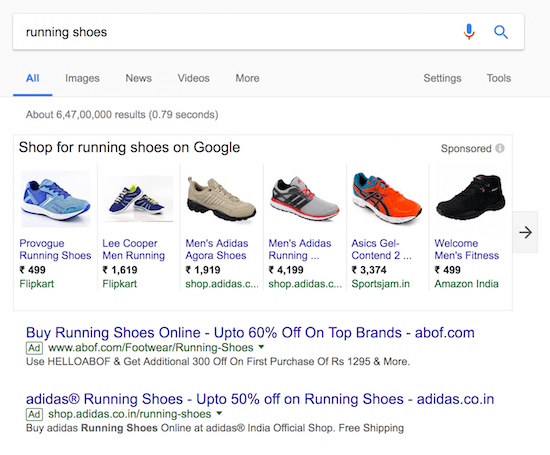
With search engines, you are reaching out to people who are looking for you. You are meeting them in the middle. However, with display ads (interruption ads), you are knocking on the doors of people who may or may not be interested in what you have to sell.
Analogy: Imagine search engine like being a big marketplace, and the internet user who uses the search engine is like the guy walking into the marketplace and looking for what he wants. However, display ads are like door-to-door salespeople knocking at different doors to try to sell something. The buyers are not interested, and they did not welcome the salesman.
Buyer intent is clearly expressed in search engines compared to any other digital medium. That’s why SEO and SEM are one of the most essential components of digital marketing. And Google has the lion’s share of the search engine market.
What does a Search Engine or Google Want?
You want free traffic from Google. You want your articles to be ranked high in search engines. That’s what you want. But Google is not in the business of sending free traffic to your websites. They are in the business of running a search engine and making revenue from the ads!
The only way to get good search rankings for your web pages is to think about what Google wants and give it to them. If you help other people get what they want, there is a high chance that you will get what you want. 🙂
A search engine like Google wants internet users to use their search engine frequently. And they can achieve that only by delivering quality and relevant results. (Who uses Yahoo or Bing anymore? We don’t use it because Google gives us better results).
So that’s what Google wants. But Google needs your help in delivering high-quality results. Because Google doesn’t create all the content in the world by themselves. They need your help in creating content. You are the content producer. If you create good quality content, then Google can help you market it. It would be a win-win.
Ideally, Google would want to review each and every page on the internet manually and rank them on the search engine result pages, for every keyword, based on the quality and relevancy. But the internet is too large, and there are hundreds of millions of pages.
So they have built an algorithm that automates this process. The algorithm checks each page for quality and relevancy and then ranks it accordingly. The algorithm is the core of the search engine. It mimics human intelligence, and that’s their greatest asset.
For Google’s algorithm to decide which pages are useful and which pages are not, they need signals. What signals? Quality and Relevancy signals! Who sends those signals? Your website users and you, the website owner (webmaster).
Two Important SEO Factors: Quality and Relevancy
When you think about search engine results, there are two important factors involved in it. One is quality, and the other is relevancy.
Quality: If you are searching for “top 10 laptops” and if there are 50 websites that have written articles about top laptops in the market, you would want the highest quality result to appear on the top. You might not want to read lower-quality articles.
Relevancy: If you are searching for “top 10 laptops” and if the search engine shows results for “top 10 mobile phones”, the result will not be useful for you even if the page about the top 10 mobile phones is of superb quality. It is not relevant to you and hence not useful to you.
So the results have to be both of high quality and high relevancy. Otherwise, it will not be useful to internet users. Quality signals are sent mostly by web users based on their behavior, and we call it off-page SEO. Relevancy signals are mostly sent to Google by Webmasters, and we call it on-page SEO.
User Signals (Off-Page SEO)
Search engines track user behavior on a site to try to find out the quality and relevance of the website and the pages inside it. There are many user signals recorded by search engines, but the major ones are obvious.
Primary User Signals:
- If a user finds an article useful and relevant, he will share it on social media. (Social Signals)
- He may link to the article from his blog or a discussion forum. (Backlinks)
- He will spend a lot of time on the page reading the article. (Time spent on site)
- He will not hit the back button on the browser after clicking on your link in the search engine results. (Low bounce rate)
Off-page optimization is done by your users by communicating these signals to Google. These signals are predominantly signals of quality but have relevancy signals too. User signals are not under your control.
Webmaster Signals (On-Page SEO)
Google also wants signals from webmasters (website owners) about the type of content that is available on our websites. These signals are predominantly relevancy signals than quality signals. Because every webmaster would claim that their content is of the best quality!
Webmaster Signals:
- Title of the page and website as a whole
- Meta description of the pages
- Images and image alt tags on the pages
SEO Factors that Webmasters can Control
Apart from sending relevancy signals, there are other things that webmasters can do to improve their website’s search friendliness. Here are some of the major ones.
- Give a good user experience (make it mobile friendly, easy to read)
- Have a good hosting and high page load speed
- Help users navigate through the site in the best way possible
Once you have got these SEO basics right, you can master SEO. Tactics and strategies to achieve the above will keep changing over time.
SEO Fundamentals Do Not Change, Ever
Any new SEO technique that comes up will fit into the above framework. All you need to do is check if it helps your users and the search engines and if it is a yes, you can go ahead with it. That’s the only long-term SEO strategy that you can have.
For example, the latest trend in SEO is AMP (accelerated mobile pages), but it is just another factor that helps with a good user experience. Internet users would like to get the web pages fast and not wait for them.
Many webmasters try to game the system by bending the rules. For example, webmasters may try to send false user signals of quality and relevancy. Such practices are termed ‘black hat’ SEO. They may build backlinks themselves instead of earning links organically. They may boost fake social shares.
With such practices, some webmasters may get results in the short term, but in the end, if you have to win the SEO game forever, you have to make it a win-win-win situation for your users, the search engines, and yourself.
Now that we have discussed the fundamentals of SEO, let’s start looking at methods to optimize your website for search engines. We will discuss both off-page and on-page SEO methods and we will start from the most important to the least important factor.
On-page SEO Factors
We will start with on-page SEO factors because when you start a new website or blog, you start with on-page SEO. There is nothing you can do in off-page if you don’t have a page in the first place.
Page Load Speed
Page load speed is a very important factor in SEO. When people search for keywords in the search engine and when they click on a link, they want the page to load fast. While a page like Google’s home page will load very fast because there is hardly any content here, a page from my blog will take a few seconds to load.
You have to strike a balance between content and page load speed. A very high page load speed is good but you should not sacrifice content. Some elements take some time to load on my blogs, such as the exit popup or the chat module, but they also help me collect email IDs on my blog and help me grow my subscriber base, so I cannot ignore them.
Page load speed can be checked online from a few reputable tools. Here are the top 3
- Page speed insights by Google
- Pingdom Speed Test
- GTmetrix Speed Test
One of the pages on my blog tested with page speed insights gave the following results.

Google also gives you suggestions on where you need to improve. Many of the answers may be technical for you, but they are best solved by going with a good web hosting solution.
The following factors impact page load speed:
1. Your Web Hosting
Your web hosting company plays a major role in page load speed. Most bloggers use WordPress which is a heavy content management system. Your hosting should be capable of handling it. Basic hosting services in the range of $10-$15 a month use shared hosting (meaning they will host 100s of sites on a single server).
Such hosting will not give good speeds. Managed WordPress hosting services are the best for mid-stage bloggers. If your blog starts getting more than 5,000 sessions per day you should get a VPS or a Dedicated Server to ensure maximum page load speed. Some bloggers use managed WordPress hosting even at high traffic levels but the costs will also be high.
One more factor to note: you should use a caching plugin to speed up your WordPress blog. I use W3 Total Cache. If you use a managed WP hosting solution, they will configure it for you.
2. The Size of The Page
The size of your web page in MBs should be as low as possible while delivering maximum content. You can find out the size of a page from your browser. You can also find out the heaviest elements of your website.
If you are using the Google Chrome browser, right-click on the page and click on inspect element. Then click on network. Go to the refresh button on the page, right-click on it and click on Empty Cache and Hard Reload. You will see this option only when you have the inspect element window open.
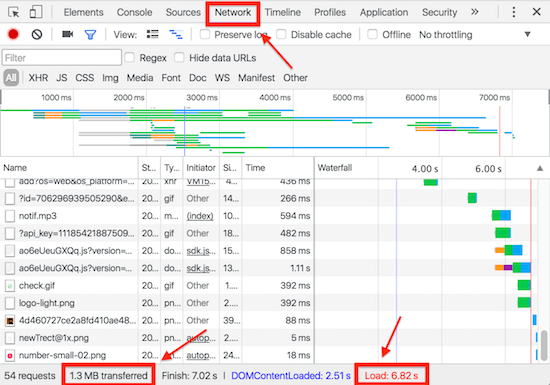
You can see that this very page is 1.3MB in size and loads in 6.82 seconds. This varies based on the speed of your internet connection as well, so this load time is not the same for everyone. You can also sort the elements on your web page to determine which elements are the heaviest.
Usually, images take up a lot of sizes and you should try to compress the images before you upload them to your page. There is a WordPress plugin called WP Smush which helps in compressing the images automatically as you upload them on your WordPress blog.
You can also use TinyPNG.com which helps you compress images online. Screenshots can usually become unnecessarily heavy and you can compress them with TinyPNG.
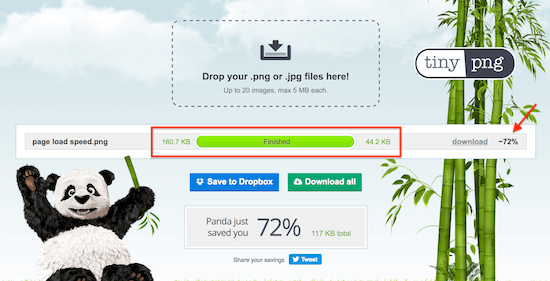
The above screenshot was compressed using TinyPNG and you can see that I reduced the size by 72% from 160kb to 44kb!
3. Content Management System
Your content management system plays a role in page load speed. If you want the highest speed then a simple HTML page would work best. However, you cannot manage a blog by creating HTML pages yourself. If you are planning on having a static site, then plain HTML pages hosted on Amazon S3 servers would be the best choice.
Title, Description, URL, and Content
The title, meta description, and content on the page play a major role in ranking your web pages at the top. When someone is searching for a keyword, your website’s title and description have to match what the internet user is searching for.
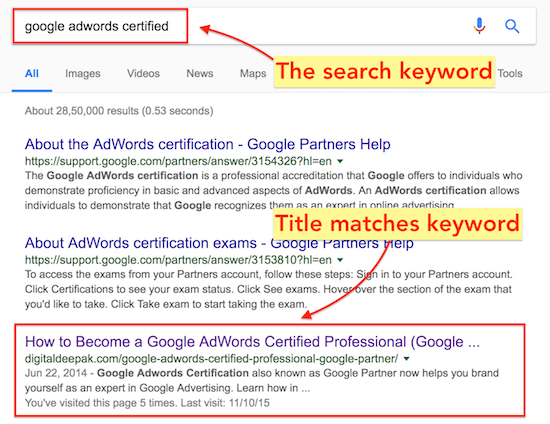
In the above screenshot you can see that if someone is searching for “Google AdWords Certified”, my blog is showing up with a similar title.
When the search keywords and the page title match, it leads to higher CTR. As discussed before in this article, it is a sign of high relevance. And relevancy is linked to on-page SEO.
You can see that the URL and the meta description (the 2 line description below the URL) also play a role here. The keywords also get bolded in the description to show the search engine user that the content is the same as the searched keyword.
The Power of Content
After the title, URL, and meta description (which appears on the SERPs – search result pages), the next important component is the content itself. The page content is more important than the title, URL, and description because we are not always targeting a single keyword.
50% or more of all the keywords searched on the search engines are new. Since people’s thoughts are unique, the keywords are very varied. Everyone will search for the same thing a little differently. Search engines will try to match these keywords with the content on the page and rank it accordingly.
When you look at the search term report on Google AdWords or the keywords on the search console, you will see that the way people search is very varied.
Here’s one example from my search console. 41 visitors have come in the past 30 days with the keyword ‘Google AdWords Certification Cost’.
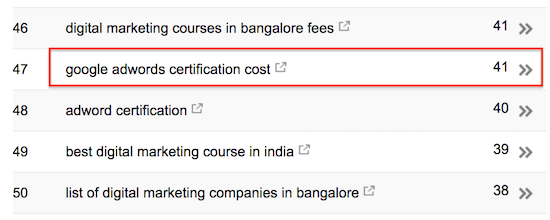
Though the title doesn’t contain this keyword, I had mentioned somewhere in the article that the certification is free and doesn’t cost anything. So when someone searched specifically about the cost, Google brought up my article!
In such cases, the meta description also changes based on the keyword that an internet user is searching for. Here you can see that the search engine has picked up some content from my page and added it to the meta description by overriding my default meta description.
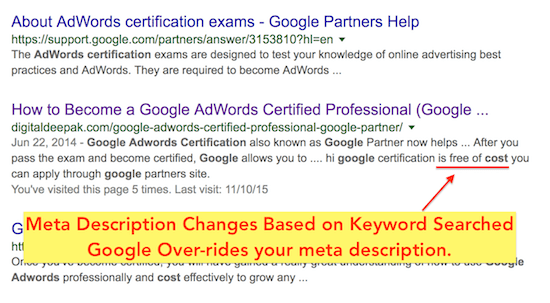
The words that match with the search keyword have also been bolded so that the internet user knows that it is relevant to him/her.
So you have to keep in mind that it is not always about the primary keyword. There are a lot of auxiliary long-tail keywords around the main content that you publish and you will attract search traffic for those keywords.
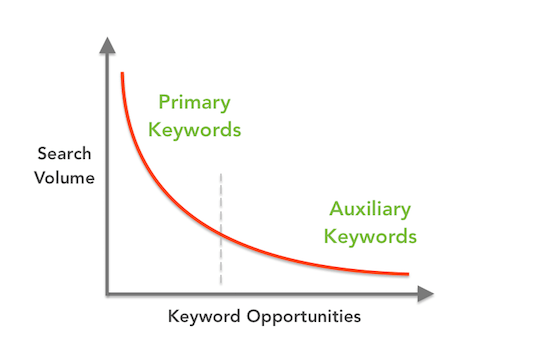
When I did some in-depth analysis of the traffic that I got to my blog from the various keywords using the search console, I discovered that I received more than 50% of the traffic from the auxiliary and long-tail keywords than the main keywords that I was targeting.
This is where the power of content marketing really kicks in. The more content you have, the higher the chances for keywords matching with your content, and it will lead to more search traffic. (However, also keep in mind that you should create content only when there is a demand for it).
Search engines are getting smarter by the day and include a lot of complex algorithms to find out if your content will be useful for the people searching for it. The content on your page is by far the most important on-page SEO factor!
More on-page SEO factors and other off-page SEO factors will be updated here soon.
Conclusion
I hope this post helped you understand the fundamentals of SEO. Once you get the basics right and make sure that you are in a win-win game with the search engines, you would never need to worry about another algorithm update from the search engines. If there is an update, it would only help you get better rankings and more traffic!
SEO is important and that's why it is one of the top jobs in marketing.
In future lessons, articles, and courses we will discuss how to master the SEO game. I will also keep this post updated with new SEO concepts once in a while.
More SEO Topics
- Keyword Research – finding out what users are searching for
- Local SEO – How to get results based on location and geography
- Rich Snippets & Schema markups – adding additional information such as price, ratings, etc in the search results
- Using Google Search Console to monitor the SEO health of your websites
- Advanced On-page and off-page SEO
- Video SEO and other media types that enhance SEO
- Advanced SEO Tools that give you insights for ranking better (Moz, Ahrefs, etc.)
Stay tuned for more SEO lessons in the near future.
Cheers,
Deepak Kanakaraju